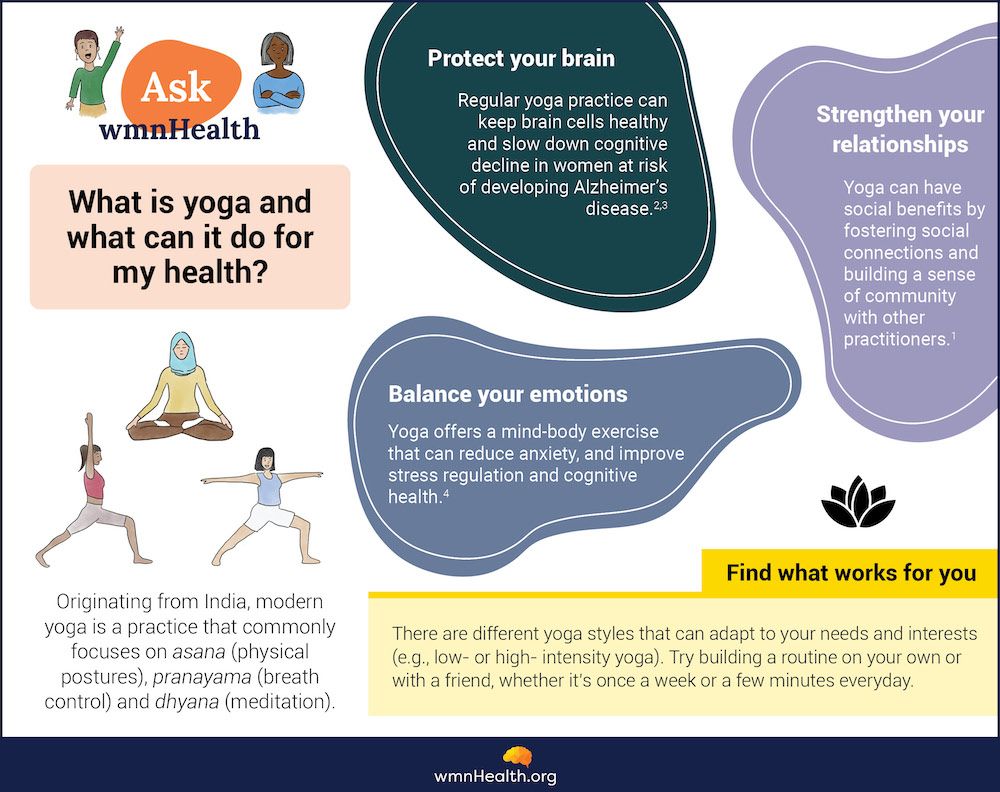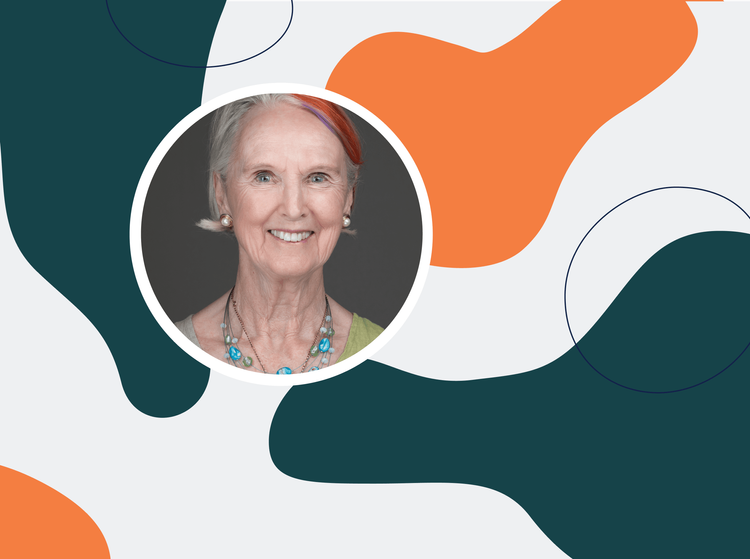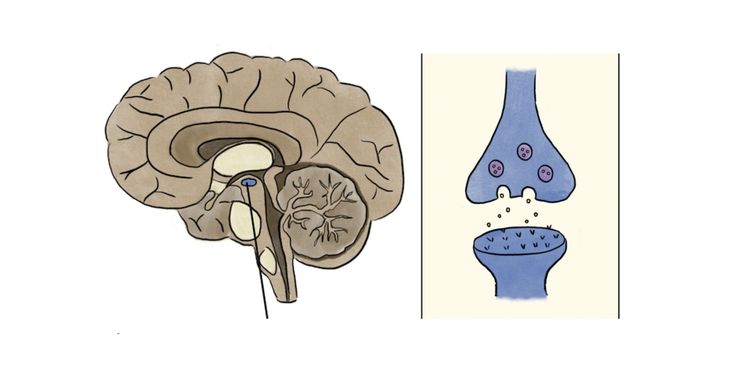
Yoga's surging popularity around the globe has spurred new efforts to understand the science behind its health impacts, particularly on the brain.
Tulsi Chase, a certified yoga instructor and educator at the Sadhguru Center for a Conscious Planet at Beth Israel Deaconess Medical Center, a Harvard-affiliated hospital in Boston, collaborates with doctors to develop specialized yoga classes for a range of conditions — from long COVID to chronic pain to Parkinson's disease.
Chase spoke with wmnHealth about what these classes offer to patients and what the Center's researchers are learning about yoga's potential as a health and wellness tool.
This interview has been lightly edited for breadth and clarity. Photo credit: Sadhguru Center at Beth Israel Deaconess Medical Center.
wmnHealth: What experiences drew you to yoga, and how did you get involved in your current role at the Sadhguru Center?
Tulsi Chase: I started appreciating the power of yoga and its impact on my mental and physical health when I went through a spine injury. I turned to breathwork and meditation to help me deal with the pain and mental trauma of it. It supported me through that time and transformed my experience from agonizing pain to having a little space between who I was and what my body was going through. It also gave me tools when I felt I didn't have many. That experience inspired me to seek out how I could bring the same tools to the world.
I could see how the U.S. healthcare system is broken and knew yoga's extremely powerful health impacts. But I wanted to be able to study it scientifically and dig a little deeper to understand the mechanisms of how they work in the human system, so I joined the Sadhguru Center as the head of education and outreach. Today, after 3000+ hours of rigorous yoga training, I help design our interventions. This means curating a specific set of tools tailored toward one particular medical population, for example, people who have long COVID or Parkinson's. We focus on the symptoms of that medical population and select three to four tools, from yoga poses and breath exercises to meditation techniques, that could best enhance their health.
 (References can be found at the bottom of the article.)
(References can be found at the bottom of the article.)The Sadhguru Center is placed within a larger medical center in the Boston area. How do you ensure that the tools your team offers complement other kinds of care available at the hospital?
Chase: In their health journeys, patients are asking for yoga and other mindfulness-based interventions, yet doctors don't know very much about the impacts of yoga and meditation and how it can be used as a complementary therapy to what they're offering medically. There is a need, and there is a desire, so having us there as a resource in the hospital system is huge.
When we first started, we focused on telling people, "Hey, we exist. We're here, and we can offer support." Now people are coming to us, and doctors are referring their patients, for example, from the Pain Center. They don't want to send their patients to any odd yoga class. Instead, in our classes, we only teach evidence-based practices curated and designed in collaboration with these doctors. So, for example, for our Parkinson's program, we created a specific set of interventions in collaboration with the Parkinson's Center of Excellence at our hospital. Historically, there have been a lot of Parkinson's resources at the hospital, especially for motor health. But they reached out to us because they noticed that most of their patients also experience mental health challenges. We designed a program in which we teach different types of meditation and breathing techniques focused on the mental health of Parkinson's patients.
Yoga for Parkinson's
Parkinson's is typically classified as a movement disorder, resulting in tremors, stiffness, and difficulty with everyday activities/ But its mental toll is equally heavy. Research estimates about 50 percent of Parkinson's patients experience depression and anxiety. An analysis of 10 studies revealed that yoga can act as a powerful buffer against these mental health challenges and even improve balance and mobility in people with Parkinson's.
You were able to use yoga as a healing tool for your mind and body. Have you noticed that it has a similar impact on patients you've worked with?
Chase: Almost all our patients report feeling much more calm, much more relaxed, much more able to manage their life. But I've seen other benefits, too. Recently, in my class, I observed that a patient was having a lot of involuntary movements. As the class went on and they went through the meditation practice, these tremors naturally reduced. They were amazed that as they relaxed through the class, it helped with their tremors.
Beyond those kinds of physical impacts, these classes aim to empower them to take their wellness into their own hands because no matter what your medical condition is, you feel like you've lost some agency in your life. Especially with Parkinson's, you feel like you've lost agency over your body. Having some tools that you can use to manage yourself, your mind, your body, your energy, and your emotions on a daily basis can be extremely empowering for people who don't feel like they have agency.
Brain chemistry
Exercise, including yoga, increases the levels of gamma-aminobutyric acid (GABA), a brain chemical that influences mood, lowers blood pressure, and reduces muscle spasms. It does so by calming the hyperactive nerve cells associated with muscle stiffness and spasms.
Outside of offering yoga as a wellness tool, how is your team working to scientifically understand the relationship between yoga and the brain?
Chase: One of the focuses of our center is to understand the specific mechanisms behind the impacts of yoga and meditation on health and well-being. We do this on four different levels. One is through neuropsychological surveys. This means questionnaires that people fill out weekly about how their perceived stress is shifting or how their experience of well-being is being impacted when they're doing these practices regularly. The second layer is looking at blood biochemistry. So, for some of our experiments, we draw blood samples and look at what chemical changes are happening in the blood. For example, we look at specific blood biomarkers that can give us information on stress levels, like cortisol. The third level is what's happening in the brain — the structure and function. How is the brain changing on meditation? And we've done a significant number of studies looking at results from brain scans on both expert and novice meditators. And then the fourth level is genetic changes because very few studies have been looking at the impacts of yoga and meditation on gene expression. In collaboration with experts at the University of Florida, we did a study examining how an eight-day meditation retreat impacts the inflammatory pathways in a specific set of genes. And it showed that the same genes that are dysregulated in someone with severe COVID-19 or multiple sclerosis (MS), for example, were upregulated in someone who had been through this intensive mediation retreat.
Yoga and the brain
A growing body of research suggests yoga can lead to changes in brain structure, particularly the hippocampus, prefrontal cortex, and amygdala — areas of the brain involved in emotional processing, memory, and cognition. The hippocampus is thicker in yoga practitioners, for example, and they experience lower age-related loss in brain volume than non-practitioners.
Several studies have also suggested that yoga can reverse stress-related changes in the DNA.
What advice do you have for people looking to incorporate yoga as a wellness tool?
Chase: Do it consistently. That's the key. In all our research, the one consistent finding that we have seen is that those who consistently do the practices reap the most transformative benefits. But if people are just doing it here and there, then they don't experience the benefits to the degree it's designed for because it's not a therapy or an exercise. Yoga is a discipline that you take into your life and make it an everyday thing. But I understand accessibility is very important because not everyone can take a yoga class — physically, emotionally, mentally, or financially. We're lucky to have a team of 12 teachers from across seven time zones who work with me to offer these programs for free.
Infographic references:
- Ross A, Bevans M, Friedmann E, Williams L, Thomas S. "I am a nice person when I do yoga!!!" A qualitative analysis of how yoga affects relationships. J Holist Nurs. 2014 Jun;32(2):67-77.
- Krause-Sorio B, Siddarth P, Kilpatrick L, Milillo MM, Aguilar-Faustino Y, Ercoli L, Narr KL, Khalsa DS, Lavretsky H. Yoga Prevents Gray Matter Atrophy in Women at Risk for Alzheimer's Disease: A Randomized Controlled Trial. J Alzheimers Dis. 2022;87(2):569-581.
- Villemure, C, Ceko, M, Cotton, V, Bushnell, MC. Neuroprotective effects of yoga practice: age-, experience-, and frequency-dependent plasticity. Frontiers in Hum Neuro. 2015 May(9).
- Voss S, Cerna J, Gothe NP. Yoga Impacts Cognitive Health: Neurophysiological Changes and Stress Regulation Mechanisms. Exerc Sport Sci Rev. 2023 Apr 1;51(2):73-81.


